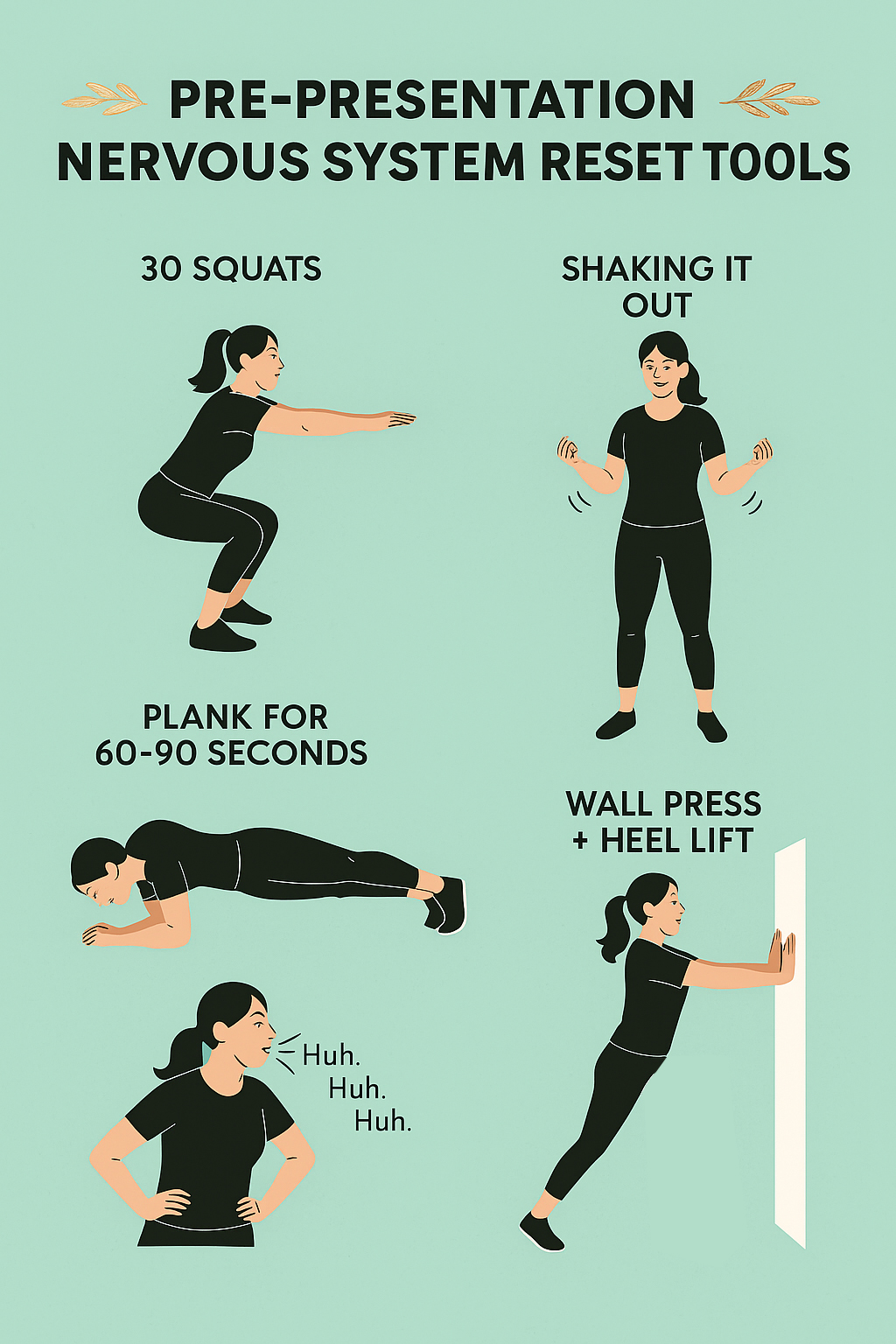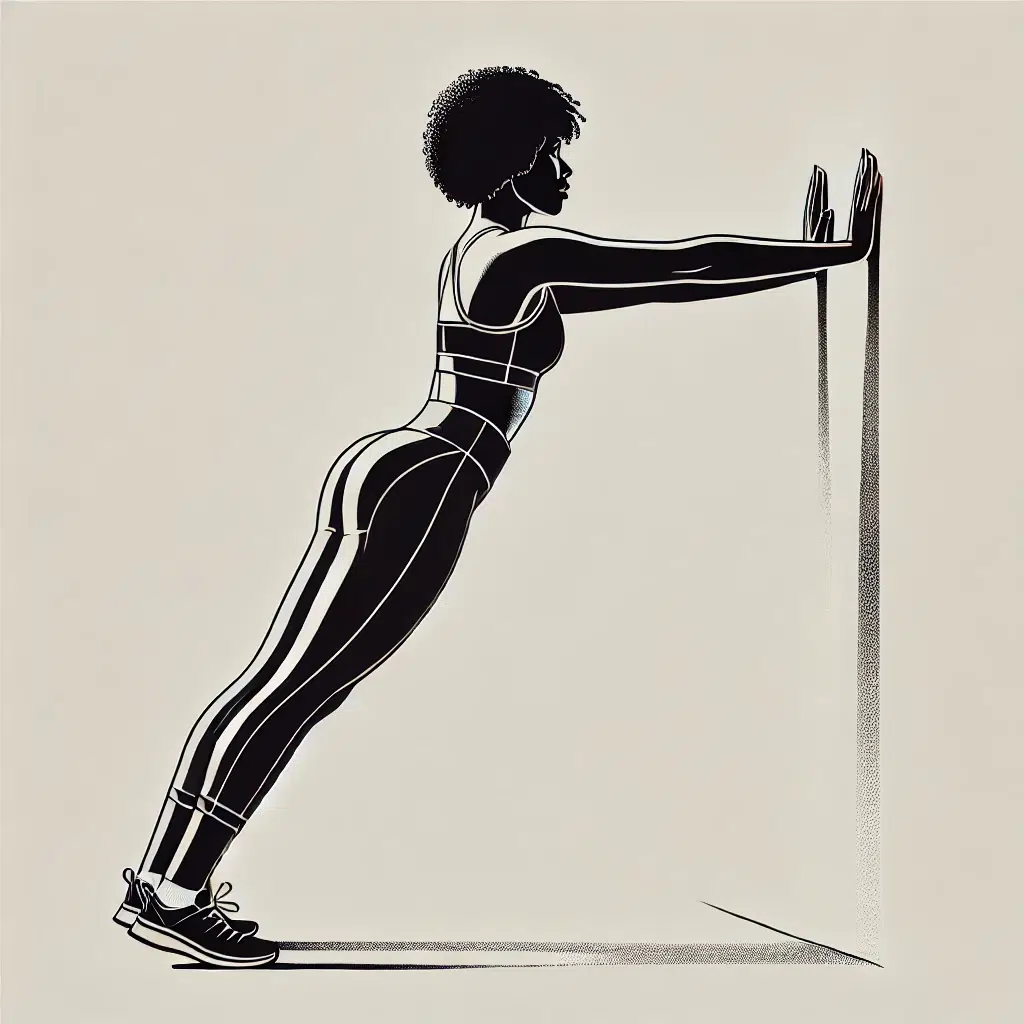Confession time: I get nervous before speaking in front of people. Like, sweaty palms, mind-blank, “what-was-I-supposed-to-say?” kind of nervous. One time, I was standing in front of a group of people I knew and loved—and poof—every single word vanished from my brain like a magician's rabbit. Not fun.

Ami Mariscal
So when I met Sophia Kaminski —a brilliant voice coach and former opera singer who also once lost her voice mid-career—I felt an instant soul connection. She gets it. She’s lived it. And she turned that experience into powerful wisdom for performers, speakers, and any of us who have ever wanted to run and hide before a presentation.

Sophia Kaminski
I booked a voice lesson with her to prep for a talk and get close to my bucket list goal of killing it with a karaoke song, but what I got was so much more. She didn’t just help me find my voice—she helped me regulate my nervous system using my body. Not “woo,” but real, grounded, somatic science-meets-art stuff. We worked on matching physical exercises to the intensity of my nerves, and y’all… it was a game changer.
Since then, I've been sprinkling her tips into my daily life like self-care glitter—before client calls, presentations, even emotionally intense convos. And of course, I couldn’t keep all this magic to myself.
So if your nervous system ever feels like a squirrel on espresso before you speak, perform, or just have to show up, this post is for you.
Many of us experience the ripple effects of a dysregulated nervous system amid life’s demands—from stressful workdays to sleepless nights and high-stakes moments like public speaking, competing, or simply managing day-to-day anxiety. The good news? There are effective, body-based steps for resetting your nervous system that can help you quickly restore calm, lower your blood pressure, and bring your body back to a state where it can function optimally.
This blog post is your practical guide to understanding the autonomic nervous system, its role in well-being, and actionable techniques to relieve stress, enhance overall health, and regain control. You’ll learn the science behind how our bodies react to stress, why simple practices like deep breathing and the “wall press reset” work, and how these grounding tools—even if you’re short on time or space—can be a game changer for mental clarity, emotional stability, and physical health.
Understanding Your Nervous System
How the Autonomic Nervous System Regulates Your Life
The autonomic nervous system (ANS) is the unsung hero of your health. It controls involuntary body functions like heart rate, digestion, breathing, and even how you respond to stress hormones. The ANS has two main branches:
- Sympathetic nervous system: Activates the “fight or flight” response, flooding your body with stress hormones (like adrenaline) when facing threats or high alert.
- Parasympathetic nervous system: Triggers the “rest and digest” state, promoting relaxation, slowing your heart rate, and allowing your body to recover and heal.
A healthy nervous system seamlessly switches between these states. But when you experience chronic stress, trauma, or persistent anxiety, your body can get stuck in sympathetic dominance (fight or flight mode) or swing between extremes. This leads to nervous system dysregulation, manifesting as muscle tension, high blood pressure, chronic pain, digestive problems, sleep issues, and mental fog.
Physical Signs of a Dysregulated Nervous System

Do any of these symptoms sound familiar?
- Racing heart, sweaty palms, or shallow breathing
- Trouble sleeping or frequent waking
- Tight muscles or jaw clenching
- Frequent headaches
- Digestive discomfort
- Difficulty focusing or feeling scattered
- Quick temper or mood swings
If so, your nervous system may need support to restore balance.
Quick Body-Based Tools to Reset Your Nervous System
Resetting your nervous system doesn’t have to involve lengthy meditation retreats or expensive therapy. Research shows simple, targeted movement and breathwork can quickly shift your body out of fight or flight mode and promote relaxation—even in high-pressure situations.
Here are some effective, science-backed strategies to relieve stress, reduce muscle tension, and regulate the nervous system:
1. Move Your Body to Shift Adrenaline

When adrenaline and other stress hormones surge, your body needs a release. Movement is a powerful tool for “burning off” excess energy and signaling safety to your brain.
Try these bursts before a stressful event, performance, or presentation (Sophia Kaminski’s recommendations):
- 30 air squats: Flush out excess adrenaline and get grounded.
- 60–90 second plank hold: Wake up your core, courage, and self-control.
- Push-ups: Just enough to activate muscles and focus your mind.
- Shake it out: Shake your hands, arms, legs, or even your whole body for 1–2 minutes to discharge stress (like “going full Taylor Swift”—seriously!).
- Breathing burst: Rapid short exhales (“huh-huh-huh” breathing, as if sprinting uphill) for 30 seconds.
Why it works: These exercises activate muscle groups, relieve tension, reduce stress, and encourage the body to switch out of high alert.
2. Deep Breathing Exercises to Restore Balance

When your nervous system requires calming, the breath is your fastest tool. Deep breathing exercises activate the vagus nerve and the parasympathetic system, leading to lower blood pressure, a slower heart rate, and immediate feelings of safety and relief.
Try these techniques:
- Physiological sigh: Deep inhale through the nose, short “top-up” sniff, then a long, slow exhale through the mouth.
- Box breathing: Breathe in for 4 counts, hold for 4, exhale for 4, hold for 4. Repeat 4–6 times.
- 5–7 breathing: Breathe in for 5 counts, exhale slowly for 7.
Pro tip: Pair deep breaths with calming sounds or in a quiet space to increase the effect.
3. Somatic Experiencing & Body Awareness
Checking in with specific points and sensations in your body can help regulate nervous systems and restore control.
- Full body scan: Close your eyes and slowly “scan” from head to toe, noticing areas of tension. Unclench your jaw, relax your shoulders, and soften your belly to trigger relaxation.
- Weighted grounding: Place a heavy object (like a book) or your own palms on your chest or thighs while breathing deeply.
4. Nervous System Wall Press Reset (“Floating Wall Lean”)

This is Sophia Kaminski’s favorite quick fix for restoring calm and centering body and mind. Perfect for backstage, office, or even a bathroom stall before a stressful event.
How to do it:
- Stand facing a wall, about arm’s length away.
- Place palms flat at shoulder height; keep elbows soft.
- Gently lean into the wall, lifting heels so you “float.”
- Engage core and legs just enough for stability.
- Take slow deep breaths for 30–60 seconds, focusing on elongated exhalations.
Bonus:
- Shake gently if you still sense tension.
- Visualize your breath moving from your palms, through your core, out your feet.
Benefits:
- Calms the fight-or-flight response
- Grounds your body and mind
- Activates deep breath and the vagus nerve
- Can be done almost anywhere, anytime
Why Resetting Your Nervous System Matters
A regulated nervous system is essential for overall health and high performance. When you consistently practice these nervous system resets, you’ll likely notice:
- Lower blood pressure and heart rate
- Reduced muscle tension and chronic pain
- Improved digestion and better sleep
- Sharper mental clarity
- Greater emotional balance and resilience
- Enhanced self-control and presence in high-stress moments
Regular regulation supports a healthy lifestyle and helps your body recover from the impact of stress hormones. Over time, these habits lead to many benefits, from increased well-being to better relationships and work performance.
FAQs on Nervous System Resetting
Physical signs such as muscle tension, sleep difficulties, constant anxiety, frequent startle responses, digestive problems, and feeling “on edge” indicate your nervous system could benefit from a reset.
Yes. By calming the sympathetic system and activating the parasympathetic system, these tools help control pain, reduce anxiety, and restore emotional state.
If you experience chronic symptoms (persistent pain, severe anxiety, or health issues that don’t resolve), a healthcare professional can help you explore additional treatments or underlying causes.
While meditation often involves quieting the mind, nervous system resets are somatic (body-based) and focus on relieving the physiological aspects of stress through movement, breathwork, or body awareness.
Spotlight on Sophia Kaminski

Sophia Kaminski personifies resilience and expertise in nervous system regulation. A Pasadena native and Juilliard-trained vocalist, Sophia has performed with The Metropolitan Opera and leads the Baker Brothers Jazz Orchestra in LA. Yet her success grew from adversity, including a career-halting experience of losing her voice and intense stage fright.
Today, Sophia applies her Trauma-Informed Nervous System and The Arts Certification to empower students and performers. Her trauma-informed, science-backed techniques bridge somatic experiencing with real-world performance needs. Her work highlights that every voice deserves to be heard and that your body can lead you back to calm, confidence, and authenticity.
Want to learn more or book a session with Sophia? Visit her website or check out her social media for more insights, videos, and live workshops: https://www.kaminskivoicestudio.com.
Restoring Calm for a Resilient Life
A healthy, regulated nervous system is vital for meeting life’s challenges with self-control, resilience, and presence. Quick, somatic practices—from movement bursts to the wall press reset and deep breathing exercises—not only reduce stress and anxiety but also promote long-term well-being and balance. Your nervous system requires care, but you have the tools within you to restore it.
Experiment with these techniques, spend time with supportive people, prioritize sleep and a healthy lifestyle, and consult with a healthcare professional for ongoing symptoms. Each small step toward balance is a powerful act of self-care.
Take a deep breath, give the wall press a try, and move forward with greater calm and confidence.
References
- Porges, S.W. (2011). The Polyvagal Theory. https://psycnet.apa.org/record/2011-04659-000
- Harvard Health Publishing. “Relaxation techniques: Breath control helps quell errant stress response”. https://www.health.harvard.edu/mind-and-mood/relaxation-techniques-breath-control-helps-quell-errant-stress-response
- Siegel, D.J. (2012). The Developing Mind. https://psycnet.apa.org/record/2012-12726-000
For expert guidance on nervous system's health, performance anxiety, and somatic experiencing, explore Sophia Kaminski’s work and follow for ongoing support.





